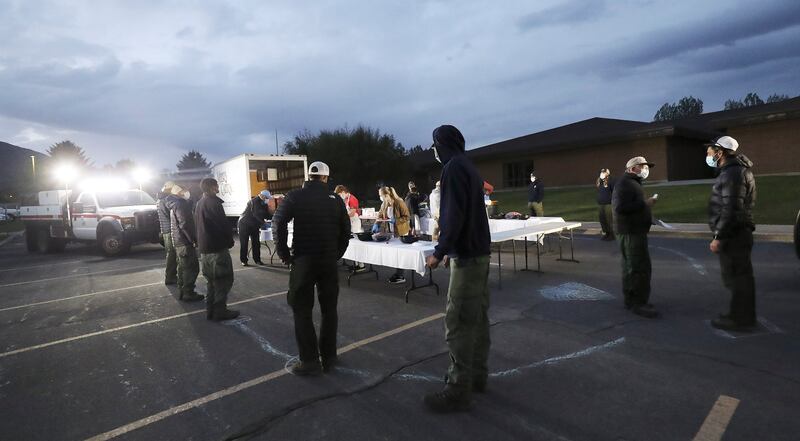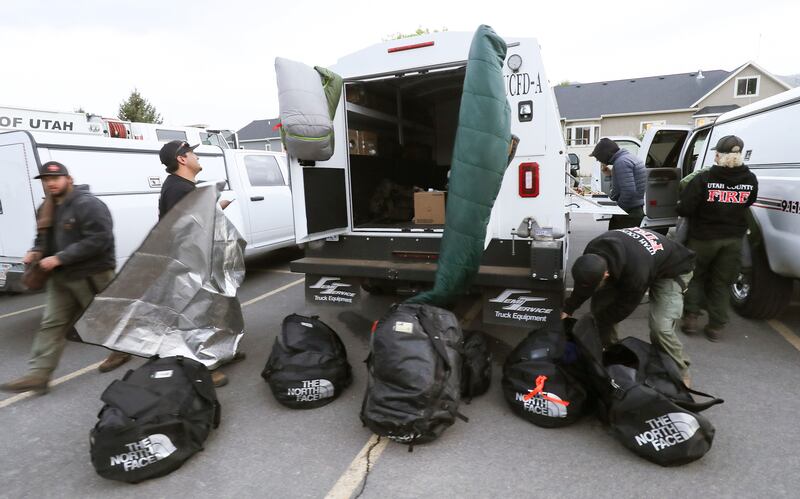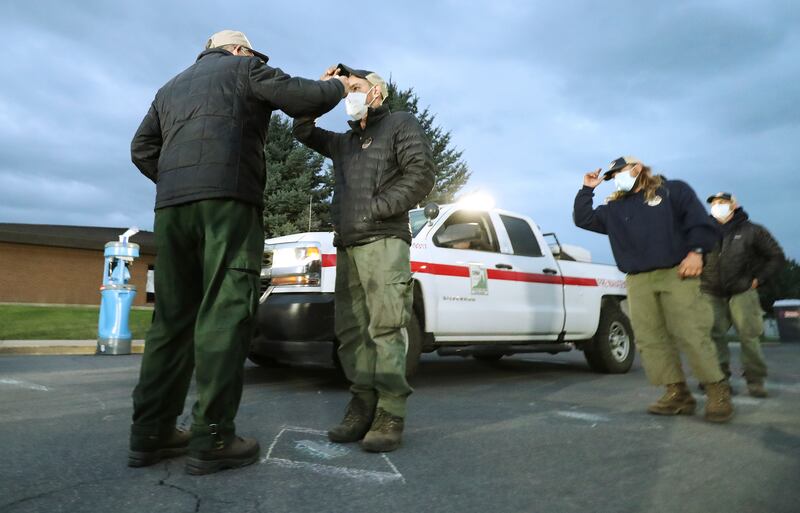SALT LAKE CITY — After a particularly dry April — the driest on record for Salt Lake City, according to the National Weather Service — Utah’s wildland firefighters are gearing up for what could be a busy summer.
The National Weather Service issued a fire weather watch Friday for Washington County, and extended a red flag warning for much of the southwestern corner of the state from Sunday afternoon until late Monday. Experts say these types of alerts could frequent southern Utah this summer, especially if the moderate drought conditions that have plagued the region for the past two months continue.
“We are actually expecting an above-normal fire season for at least the southern half of Utah and maybe even two-thirds of Utah,” said Basil Newmerzhycky, lead meteorologist for Predictive Services, a branch of the Bureau of Land Management specializing in weather related to wildfires.
But it’s not just a lack of rain that has fire agencies sounding the alarm. The winter of 2018-19 resulted in an above-average snowpack, helping fine fuels — small vegetation like grass or sagebrush — to thrive the following spring. Now those fuels are drying up in what Newmerzhycky calls “the worst combination that we can have.”
“That is a combination we had during the very active fire season here in Utah in 2018,” he said. “And we have somewhat similar conditions in place this year.”
Every year, Predictive Services issues a four-month seasonal outlook for Utah, Nevada and parts of Idaho, Arizona and Wyoming that allows the Bureau of Land Management, Forest Service and state agencies like Utah’s Division of Forestry, Fire and State Lands to make sure they have adequate staffing and resources. Predictive Services also issues a seven-day outlook that gives agencies a snapshot of where the most at-risk areas are, based on weather and fuel conditions.
While the forecasts are helpful, fire agencies across the state tend to prepare for the worst, regardless of how hopeful the outlook is.
“The predictions are good to base how we conduct our training, but we anticipate every summer is going to be busy for us,” said Dominic Burchett, Unified Fire Authority wildland division chief.
With roughly 60 seasonal firefighters, Unified Fire plays an important role in combating wildfires, big and small, in northern Utah. While large incidents are usually delegated to the state, Forest Service or BLM, Unified Fire is often the first agency to respond.
The foothills along the Wasatch Front are rich in fine fuels, and crews from Unified Fire have been busy this spring helping residents in high-risk areas address fire hazards.
“Our fuels crew is funded to be in the valley to prevent little fires from getting big,” said Burchett. “We try to get on them early, and to really spend time in the community educating the homeowners and showing them how to make their homes a little safer.”

But fire isn’t the only the only public health threat crews will have to combat this summer, and the coronavirus pandemic has forced agencies to implement sweeping changes to daily operations.
“It’s definitely posed a new and unique challenge for us, but we’ve been able to adapt,” said Kait Webb, prevention and fire communications coordinator for Utah Division of Forestry, Fire and State Lands.
A fire camp isn’t known for its cleanliness, sometimes housing thousands of firefighters who often congregate in large groups — conditions especially conducive to an outbreak of COVID-19. But agencies are doing their best to mitigate the spread, implementing social distancing guidelines, routinely sanitizing gear and checking temperatures.
Part of the BLM’s approach toward social distancing is implementing spike camps, a decades-old strategy that places small, dispersed groups in areas closer to the fire.
“It is going to create a larger impact logistically to be able to support those personnel, breaking a large fire camp up into multiple, smaller fire camps,” said Marshall Thompson, BLM public affairs specialist. “But it might also lend to the aspect that we’re able to place those smaller camps in areas closer to the fire.”
The Utah Division of Forestry, Fire and State Lands has a similar technique that Webb calls “family unit isolation.”
“We’re asking specific modules or crews to minimize contact with other crews to minimize the spread of COVID,” she said.
And this week, Webb and the division got to see those guidelines in action. Spreading almost 700 acres and pumping the Heber Valley full of smoke, the Saddle Fire near Midway was the first test for Utah’s wildland firefighters — for stopping the spread of fire, and COVID-19. On Thursday night, after having their temperature taken, each firefighter stood 6 feet apart and wore masks as they waited in line for dinner.
“It’s one thing to write those guidelines, but it’s also important to go out and see if they’re working,” Webb said. “It’s been a very different visual of a fire camp and base camp than we’re used to.”
Although crews have worked hard to combat the Saddle Fire, which is now 80% contained according to state fire officials, both Webb and Burchett said the Midway blaze is only the beginning of what could be a smoky summer in Utah.
“The fire behavior that we’re seeing in May, that’s a pretty good indicator of what our summer is going to look like here in the northern part of Utah,” said Burchett. “I think that scrub oak should not be ready to burn yet, but it is.”



